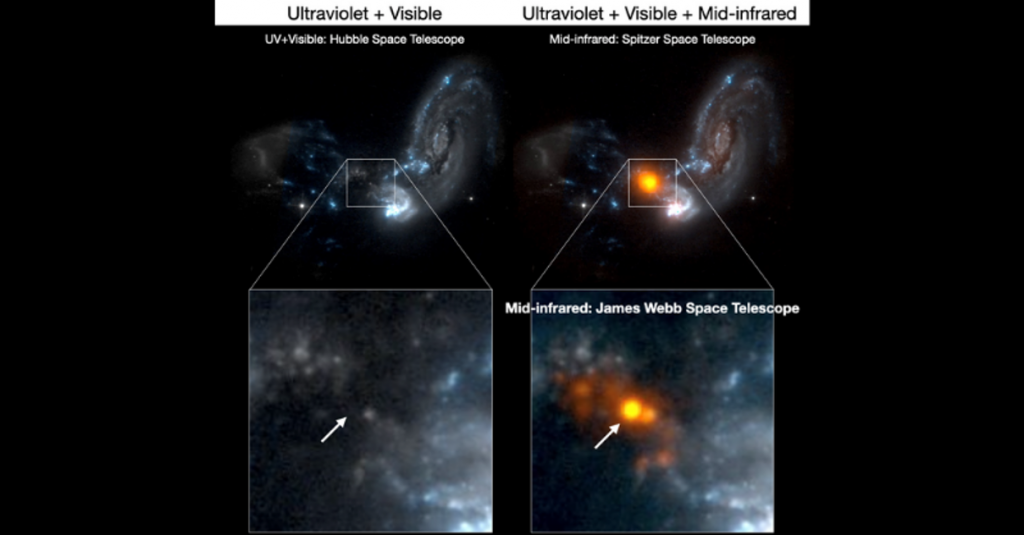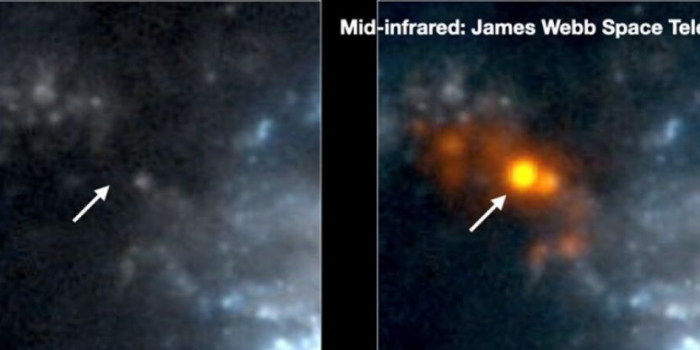Astronomers have pinpointed the precise position of a massive energy source hundreds of millions of light years away, behind a bright merging galaxy.
According to astronomers from Hiroshima University in Japan, the major energy source driving this colliding galaxy IIZw096 – located about 500 million light-years away near the constellation Delphinus – has been covered by cosmic dust.
While the energy source was first spotted approximately a decade ago, scientists have now pinpointed the exact location of what they call the “engine” of the merging galaxy using the more powerful James Webb Space Telescope.

The study published in The Astrophysical Journal Letters reveals where most of the collision system’s visible light originates.
“The James Webb Space Telescope has brought us completely new views of the universe thanks to it having the highest ever spatial resolution and sensitivity in the infrared,” study corresponding author Hanae Inami said.
“We wanted to find the ‘engine’ that powers this merging galaxy system. We knew that this source was deeply hidden by cosmic dust, so we could not use visible or ultraviolet light to find it,” Dr. Inami explained.
But by analyzing the emission from these merging galaxies in the mid-infrared wavelength with the Webb telescope, scientists could establish that this “engine” behind the collision “outshines everything else.”
Due to the telescope’s poor resolution, astronomers could not pinpoint the precise position of the major radiation source in prior studies conducted in 2010.
However, using the Webb telescope, scientists discovered that this engine is responsible for most of the mid-infrared emission, accounting for up to 70% of the system’s total infrared emission.
Astronomers also could discover that this energy source has a relatively limited radius of no more than 570 light-years – a tiny fraction of the collision system’s 65,000 light-year diameter.
According to the researchers, the data show that the Webb telescope can discover extremely dust-obscured cosmic energy sources.
“Future planned spectroscopic observations of IIZw096 will provide additional information on the nature of the dust, ionized gas, and warm molecular gas in and around the disturbed region of this luminous merging galaxy,” Dr. Inami added.


